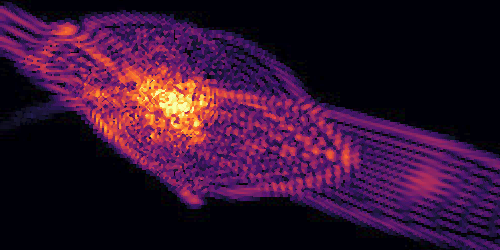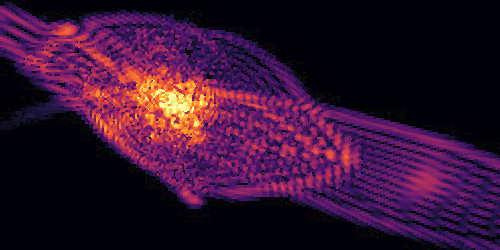How Dark Matter Shaped the First Galaxies
Dark matter makes up 85% of the matter in the Universe, yet its true nature remains elusive. One key to unlocking dark matter’s mystery may lie with protogalaxies, cosmic cradles that nurtured the first stars. Dark matter would have influenced the distribution and shapes of these galactic precursors in ways that could indicate what types of particles comprise this enigmatic substance. Now, new simulations offer a glimpse at what the earliest star-forming regions may have looked like under competing dark matter theories.
The leading theory, known as cold dark matter, does well at reproducing in simulations the large-scale structure in the Universe. However, it struggles at smaller scales, such as the cores of low-mass galaxies, and searches for cold dark matter particles continue to turn up empty. That has led to other proposals such as “warm” dark matter, a lighter and speedier particle, and “fuzzy” dark matter, an ultralight boson that may have imprinted its quantum-wave-like nature on early distributions of stars and gas.
In the new simulations, Philip Mocz of Princeton, New Jersey, and colleagues found that these three models each lead to a different distribution of dark matter and, therefore, a distinct pattern of galaxy formation. All dark matter candidates initially coalesce into a web of thread-like filaments millions of light years long. If cold dark matter is in charge, those filaments quickly fragment into clumps, causing the protogalaxies to emerge as separated clusters of stars. Otherwise, newborn stars light up entire filaments, with fuzzy dark matter imprinting an additional interference-like pattern on the arrangement. These results could provide a useful guide for NASA’s upcoming James Webb Space Telescope, which will attempt to image these primordial galaxies.
This research is published in Physical Review Letters.
–Christopher Crockett
Christopher Crockett is a freelance writer based in Arlington, Virginia.





